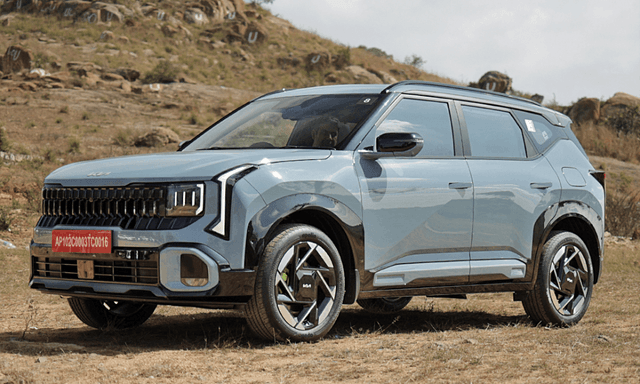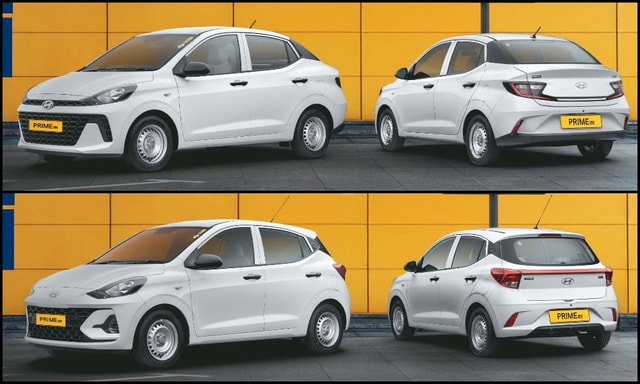Tesla Details New Supercomputer for Self Driving; Could Be Fifth Fastest In The World

- This could be the fifth fastest supercomputer in the world
- It harvests data from Tesla all around and can take high resolution video
- Tesla has over a million 10 second videos and 6 billion objects
Recently Tesla announced a transition to Tesla vision, it has new upgraded AI-based self-driving tech which will just depend on the data acquired from the cameras on the car that has been trained on a supercomputer - now it has detailed its approach at its AI day event. Elon Musk had earlier revealed months ago that it had been training its self-driving neural network on something called the "Dojo" computer. But now Tesla has unveiled a supercomputer that is more like a developmental prototype to the dojo.
More about this supercomputer was revealed by Tesla's head of AI Andrej Karpathy who claimed it is this supercomputer that allows it to with radar and LiDAR sensors which have been popularized by Google's Waymo self-driving tech. Tesla instead uses high-resolution optical cameras. Karpathy revealed how Tesla trained its supercomputer to understand the environment the way a human would.
Karpathy revealed that it needed an enormous dataset, a massively powerful supercomputer to train the neural network using that dataset. That's why Tesla has been investing in supercomputers including precursors to the "dojo".
undefinedcan you tell us more about your thinking behind the pure vision approach?
— Whole Mars Catalog (@WholeMarsBlog) April 10, 2021
lots of people arguing no radar is a step backwards. why did you guys decide it was better not to use it?
Tesla revealed the new supercomputer has 10 petabytes of NVME storage and can run at 1.6 terabytes per second. It also has 1.8 EFLOPs of computing capacity which Karpathy estimates makes it the 5th fastest in the world - though he has said he's not run the relevant benchmarks that would make it the TOP500 supercomputer rankings.
"That said, if you take the total number of FLOPS it would indeed place somewhere around the fifth spot. The fifth spot is currently occupied by NVIDIA with their Selene cluster, which has a very comparable architecture and a similar number of GPUs (4480 vs ours 5760, so a bit less)," Karpathy explained to Techcrunch.
Since May, Tesla announced that it would be removing all the sensors that its cars have traditionally come with. Tesla's never were equipped with LiDARs but had radar sensors. Its autopilot is now just based on the cameras and the training algorithm that's run on supercomputers.
"The approach we take is vision-based, primarily using neural networks that can in principle function anywhere on earth," said Karpathy in his workshop. Tesla believes that replacing a human with supercomputer results in lower latencies and better 360-degree situational awareness.
Karpathy revealed that this method can correct many bad driver behaviors including in emergency braking situations where the object detection kicks in automatically to save a pedestrian from being hit or a traffic control warning that can identify a yellow light and send an alert to the driver who hasn't yet slowed down.

Tesla's newest cars don't come with any sensors
Tesla also has a feature called pedal misapplication mitigation as the car identifies pedestrians in the path or even a lack of driving path and responds to the driver accidentally stepping in on the accelerator. The supercomputer collects video from all the eight cameras that surround a Tesla vehicle at 36 frames per second which provides incredibly rich real-time environmental information.
Tesla believes this method is more scalable as it keeps collecting data but privacy advocates may not agree. Tesla feels this works better as it is better than manually building high-resolution maps something that both Apple and Google do. Tesla's data is also coming from real-world conditions as it is able to collect large amounts of data at the velocity a human does. It also is able to match the human ability to access depth and speed.
Karpathy touts the ability for the system to auto label can mark out things like roadway hazards instantly and other objects from the millions of videos that are captured by Tesla vehicles around the world. Tesla has accumulated 1 million videos around 10 seconds each and labeled 6 billion objects with depth, speed, and acceleration. This tales up 1.5 petabytes of storage.
Latest News
 Amaan Ahmed | Jan 2, 2026Maruti Suzuki Alto Leads Revival Of Entry-Level Car Sales For MSIL In December 2025With over 10,000 units of India's most affordable car sold in the final month of 2025, Maruti's entry-segment car sales rose to their highest point yet in FY25-26.1 min read
Amaan Ahmed | Jan 2, 2026Maruti Suzuki Alto Leads Revival Of Entry-Level Car Sales For MSIL In December 2025With over 10,000 units of India's most affordable car sold in the final month of 2025, Maruti's entry-segment car sales rose to their highest point yet in FY25-26.1 min read car&bike Team | Jan 2, 20262026 Kia Seltos Launched In India At Rs 10.99 LakhOffered in 10 variants across three engine options, the second-generation Kia Seltos finally goes on sale in India.4 mins read
car&bike Team | Jan 2, 20262026 Kia Seltos Launched In India At Rs 10.99 LakhOffered in 10 variants across three engine options, the second-generation Kia Seltos finally goes on sale in India.4 mins read Jaiveer Mehra | Jan 1, 2026New Kia Seltos India Launch Tomorrow: Here’s What You Should KnowThe second-gen Seltos has grown in size, promising improved interior space while remaining a tech-laden package.1 min read
Jaiveer Mehra | Jan 1, 2026New Kia Seltos India Launch Tomorrow: Here’s What You Should KnowThe second-gen Seltos has grown in size, promising improved interior space while remaining a tech-laden package.1 min read Preetam Bora | Jan 1, 2026Opinion: 2025 – The Year Of the Mid-Size Motorcycle Boom In IndiaThe mid-size motorcycle segment, encompassing 250-500 cc, truly came into its own in 2025. But will it be sustained going forward with increased GST rates?1 min read
Preetam Bora | Jan 1, 2026Opinion: 2025 – The Year Of the Mid-Size Motorcycle Boom In IndiaThe mid-size motorcycle segment, encompassing 250-500 cc, truly came into its own in 2025. But will it be sustained going forward with increased GST rates?1 min read Jaiveer Mehra | Dec 31, 2025Hyundai Creta Sales Cross 2 Lakh Units In CY2025Carmaker said the Creta diesel still accounts for over 40 per cent of all units sold, while the share of first time buyers stands at over 30 per cent.1 min read
Jaiveer Mehra | Dec 31, 2025Hyundai Creta Sales Cross 2 Lakh Units In CY2025Carmaker said the Creta diesel still accounts for over 40 per cent of all units sold, while the share of first time buyers stands at over 30 per cent.1 min read Carandbike Team | Dec 30, 2025Hyundai Aura, Nios-Based Prime SD & Prime HB Taxis Launched In IndiaCarmaker rebrands fleet models under the Hyundai Prime brand rather than as separate variants of its passenger car range, as it previously did with the Xcent1 min read
Carandbike Team | Dec 30, 2025Hyundai Aura, Nios-Based Prime SD & Prime HB Taxis Launched In IndiaCarmaker rebrands fleet models under the Hyundai Prime brand rather than as separate variants of its passenger car range, as it previously did with the Xcent1 min read
 Preetam Bora | Dec 30, 2025TVS Orbiter Review: Real-World Performance and Range TestedThe TVS Orbiter is a promising electric scooter promising decent range, practicality and pricing. But is there any reason to avoid it? We spent a few days getting to know it better.9 mins read
Preetam Bora | Dec 30, 2025TVS Orbiter Review: Real-World Performance and Range TestedThe TVS Orbiter is a promising electric scooter promising decent range, practicality and pricing. But is there any reason to avoid it? We spent a few days getting to know it better.9 mins read Jafar Rizvi | Dec 24, 2025MG Windsor EV 38 kWh Long-Term Report: IntroductionThe Windsor EV has joined our garage, and before it settles into daily duty, I took it out to get a sense of what living with an electric car is like.4 mins read
Jafar Rizvi | Dec 24, 2025MG Windsor EV 38 kWh Long-Term Report: IntroductionThe Windsor EV has joined our garage, and before it settles into daily duty, I took it out to get a sense of what living with an electric car is like.4 mins read Seshan Vijayraghvan | Dec 23, 20252026 Kia Seltos Review: Formula Is Spot On, But Is The Timing Right?The 2nd-gen Kia Seltos has arrived, but it has the challenge of facing strong rivals like the Victoris and Sierra. The question is simple - Does it still have what it takes?9 mins read
Seshan Vijayraghvan | Dec 23, 20252026 Kia Seltos Review: Formula Is Spot On, But Is The Timing Right?The 2nd-gen Kia Seltos has arrived, but it has the challenge of facing strong rivals like the Victoris and Sierra. The question is simple - Does it still have what it takes?9 mins read car&bike Team | Dec 26, 2025Tata Punch EV Long-Term Second Report: Highway Performance, Pros & ConsAfter a week of living with the Tata Punch EV Long Range—including a proper Mumbai-Nashik highway test—we've learned what this little electric SUV is really made of.1 min read
car&bike Team | Dec 26, 2025Tata Punch EV Long-Term Second Report: Highway Performance, Pros & ConsAfter a week of living with the Tata Punch EV Long Range—including a proper Mumbai-Nashik highway test—we've learned what this little electric SUV is really made of.1 min read Seshan Vijayraghvan | Dec 22, 20252026 Tata Harrier & Safari 1.5 Hyperion Review: By The Power Of Petrol!The new Tata Harrier and Safari petrol packs a new 1.5-litre TGDI Hyperion engine, but is it an ideal alternative to the diesel version?7 mins read
Seshan Vijayraghvan | Dec 22, 20252026 Tata Harrier & Safari 1.5 Hyperion Review: By The Power Of Petrol!The new Tata Harrier and Safari petrol packs a new 1.5-litre TGDI Hyperion engine, but is it an ideal alternative to the diesel version?7 mins read























































































































